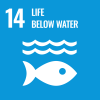
Diving Patterns of Ross Seals

 In January 1987 we documented the diving patterns of a female Ross seal (Ommatophoca rossii) in the marginal pack-ice zone near the eastern coast of the Antarctic Peninsula for 2 days using a microprocessor-based time-depth recorder. The seal hauled out during the day and dived continually when in the water at night. Dives averaged 110 m deep and 6.4 min long; the deepest dive was 212 m and the longest 9.8 min. Dives were deepest near twilight and shallowest at night; this pattern suggests that the seal’s prey, presumably mid-water squid and fish, may have been making vertical migrations or changing predator-avoidance behavior in response to diel light patterns. The dives of this Ross seal were substantially deeper, on average, than those of crabeater seals (Lobodon carcinophagus), which forage in the same areas on Antarctic krill (Euphausia superba).
In January 1987 we documented the diving patterns of a female Ross seal (Ommatophoca rossii) in the marginal pack-ice zone near the eastern coast of the Antarctic Peninsula for 2 days using a microprocessor-based time-depth recorder. The seal hauled out during the day and dived continually when in the water at night. Dives averaged 110 m deep and 6.4 min long; the deepest dive was 212 m and the longest 9.8 min. Dives were deepest near twilight and shallowest at night; this pattern suggests that the seal’s prey, presumably mid-water squid and fish, may have been making vertical migrations or changing predator-avoidance behavior in response to diel light patterns. The dives of this Ross seal were substantially deeper, on average, than those of crabeater seals (Lobodon carcinophagus), which forage in the same areas on Antarctic krill (Euphausia superba).
